23 Ground Cover Plants For Shade (That Add Texture)
Here is a list for the best ground cover plants for the shade. This low growing vegetation helps with soil erosion and adds luxurious textures and colors to your landscape.
Are you struggling to determine what to grow in your yard’s shady spots? Plenty of dependable species grow densely and are great ground cover plants for shade areas.
Ground cover refers to plants that creep or spread and create a solid section of foliage that carpets the ground.
These plants can range from three inches and exceed three feet.
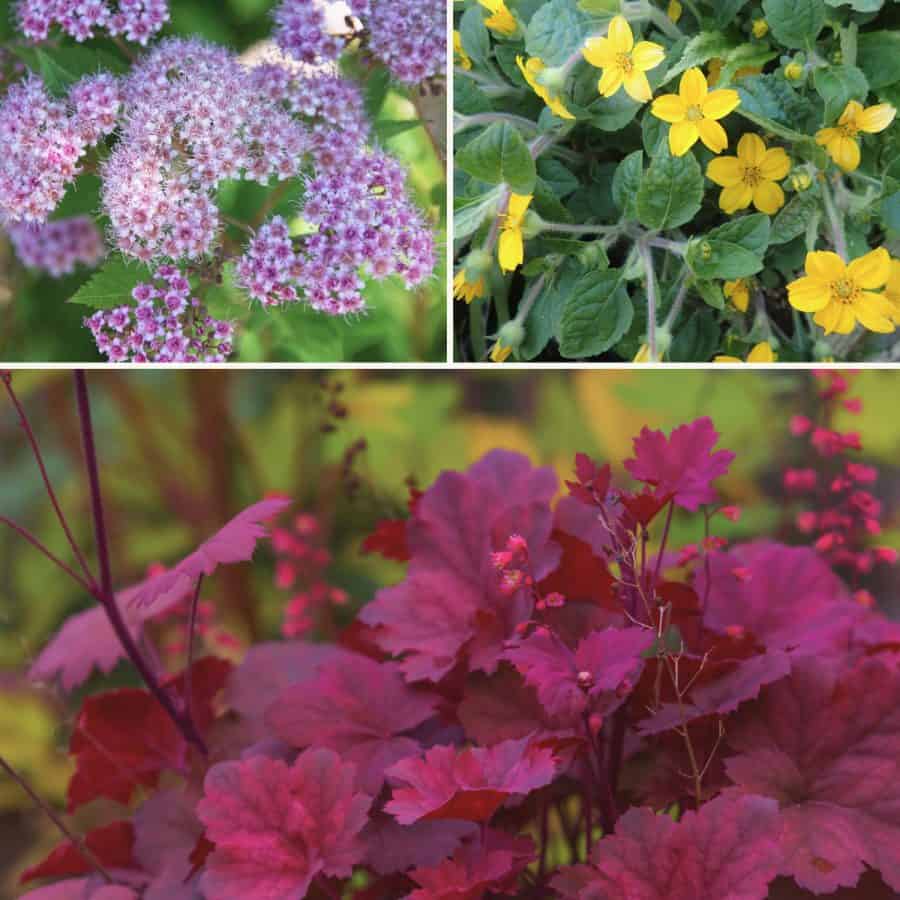
Why Use Ground Cover Plants?
My yard has too much area covered with weeds, weedy grasses, and dirt. This may be a scenario you are familiar with.
Well, this is what led me to start researching ground cover plants. While many of us plant these types purely for aesthetic reasons, they provide some functional benefits.
- Reduce weed growth
- Control erosion
- Increase biodiversity
- Low-maintenance alternative to grass
- Provide aesthetics
- Benefits wildlife
The gravel garden I installed is another great low-maintenance alternative to grass that also benefits wildlife.
The Best Ground Cover Plants For Shade
From ferns to ivy, plenty of attractive groundcover plants for shade can bring the perfect color, texture, and vibrancy to your outdoor area.
This list highlights the top 23 ground cover plants for shade, from the classic Virginia Creeper to the lesser-known Heuchera.
- Wild Ginger
- Sweet Woodruff
- Pachysandra
- Yellow Archangels
- Bunchberry
- Mondo Grass
- Coral Bells
- Virginia Creeper
- Violet
- Green and Gold
- Blue Mistflower
- Pennsylvania Sedge
- Snow on the Mountain
- Moss Pink
- Woodland Phlox
- Barrenwort
- Bugleweed
- Christmas Fern
- Woodland Stonecrop
- Golden Ragwort
- Heartleaf Foamflower
- Lyreleaf Sage
- Shade-loving mosses
Just be mindful that some of the plants that thrive without much sunlight can also overrun landscapes and threaten native species, and this will depend on your region.
A plant in one area may not be invasive in another. We recommend double-checking before purchasing to make the best decision for your yard and garden based on your needs.
1. Wild Ginger | Asarum canadense
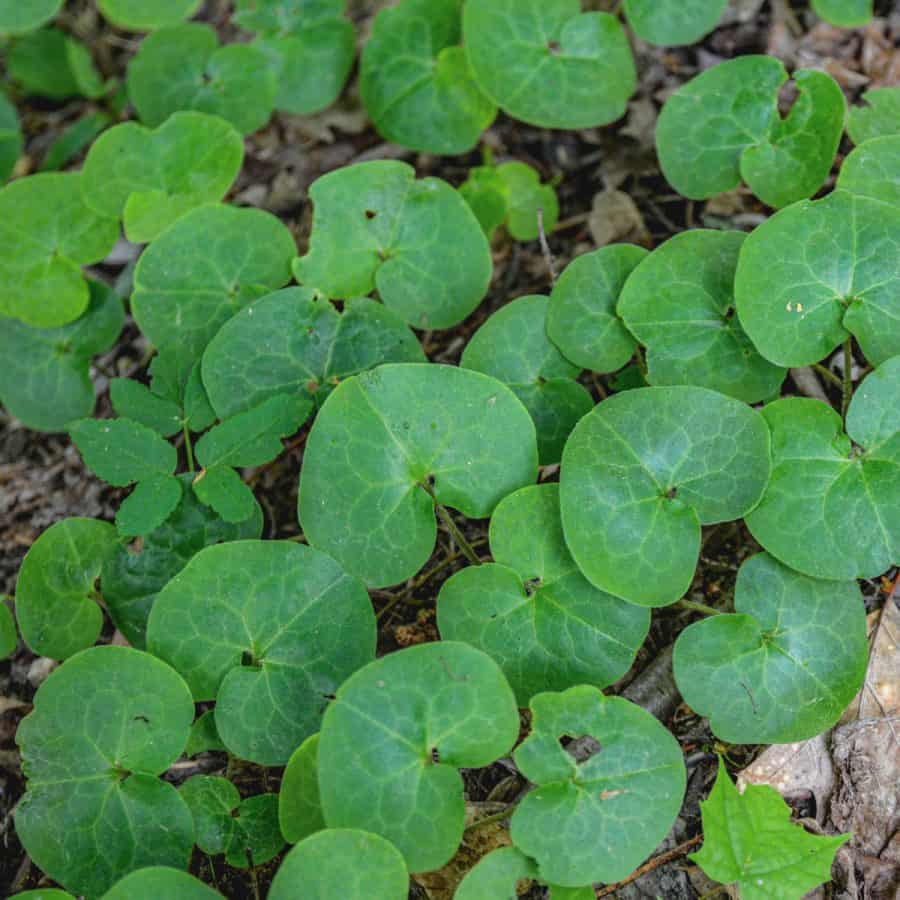
Common wild ginger, or Canadian wild ginger, is a deciduous plant perfect for a shaded area. It does best in rich, well-drained soil.
Not only does it work as a weed suppressant, but it also acts as the larval host of the Pipevine Swallowtail butterfly.
During the spring, reddish flowers bloom inconspicuously underneath the heart-shaped leaves. This is a great alternative choice to spotted deadnettle (Lamium maculatum).
2. Sweet Woodruff | Galium odoratum

Sweet woodruff, or bedstraw, is named for its sweet-smelling aroma and is an easy-to-grow ground cover plant.
It’s also resistant to rabbits and deer, which is great – you don’t want the wildlife eating all your plants!
Sweet woodruff pairs well with coral bells and rhododendrons. It’s a fairly low-maintenance plant that does well in partial to full shade and doesn’t need much water. In the spring, it has white flowers that bloom.
3. Pachysandra or Japanese Spurge | Pachysandra terminalis

This is a creeping evergreen woodland native with small white flowers that bloom in late winter or very early spring (before new growth). It grows between 4-6″.
It is deer resistant but also tends to be invasive, so keep an eye on it.
If you are looking for a native option, check out pachysandra procumbens.
4. Bunchberry | Cornus canadensis
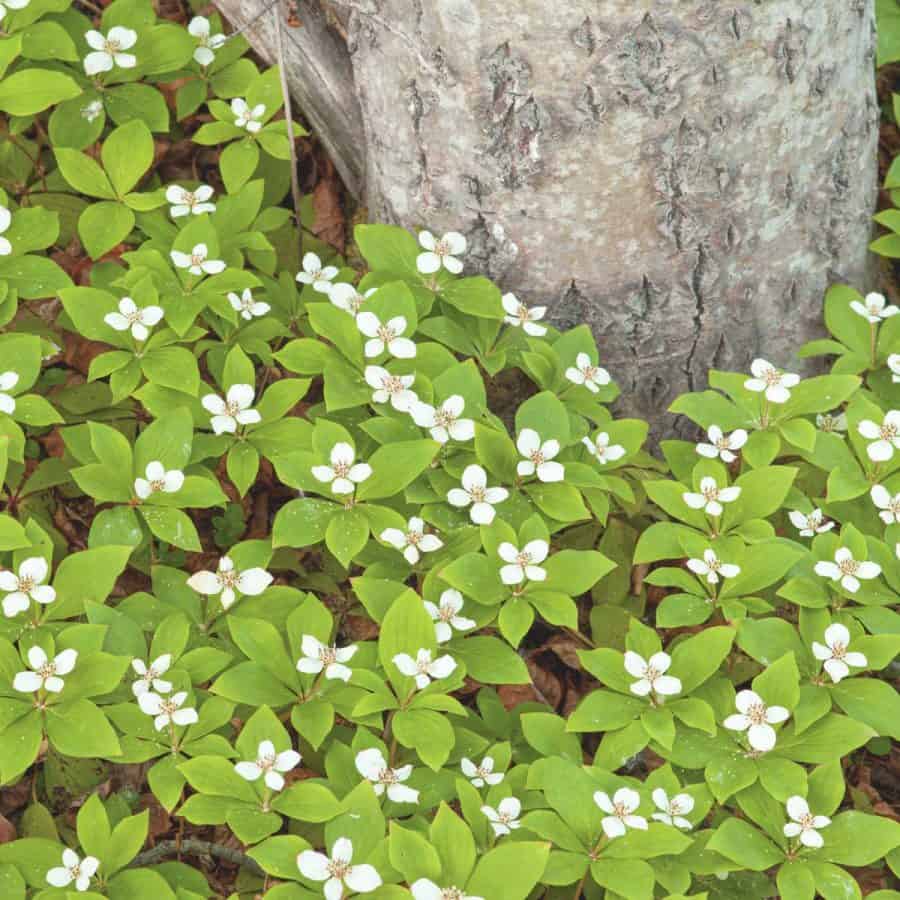
Bunchberry is classified as a form of dogwood and is native to northern regions of North America.
It’s a low-growing deciduous shrub that is a great ground cover plant in partial shade areas.
5. Yellow Archangel | Lamium galeobdolon
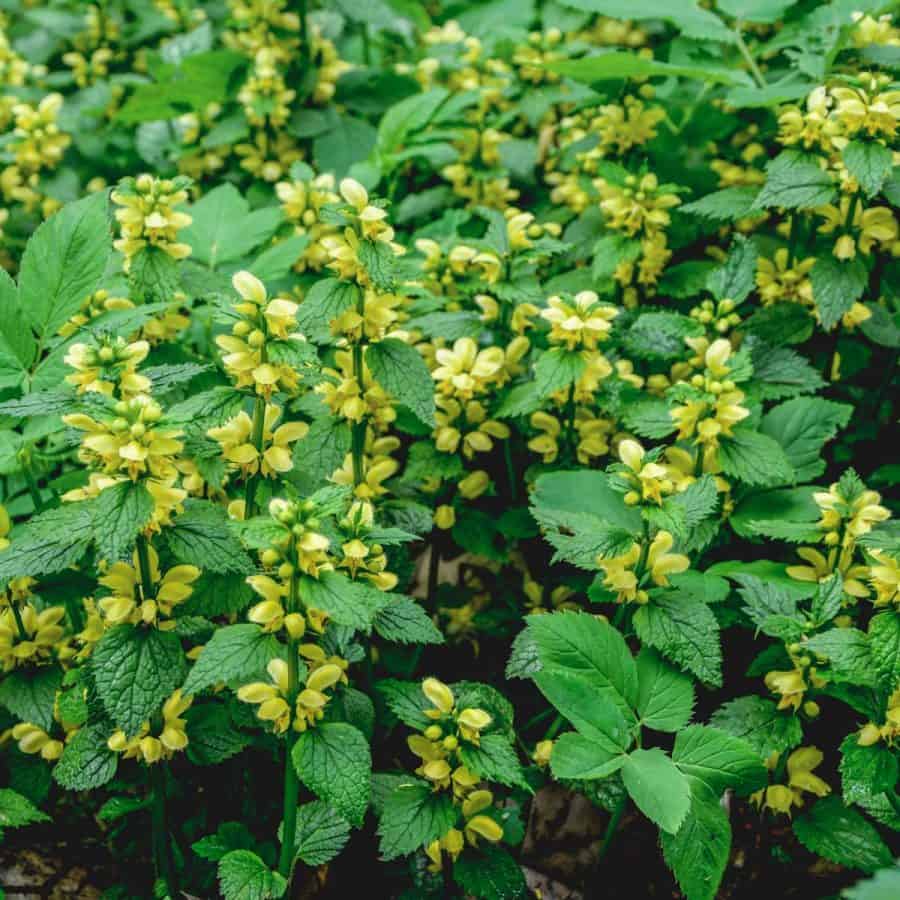
The bright yellow blooms with the angel-like “wings” give the yellow archangel its name. They bloom in spring and early summer.
It’s a perennial ground cover plant that swiftly blankets an area. It does well in partial to full shade.
It should be kept in check as the stems in its root system can embed themselves quickly and become invasive.
6. Mondo Grass | Ophiopogon japonicus
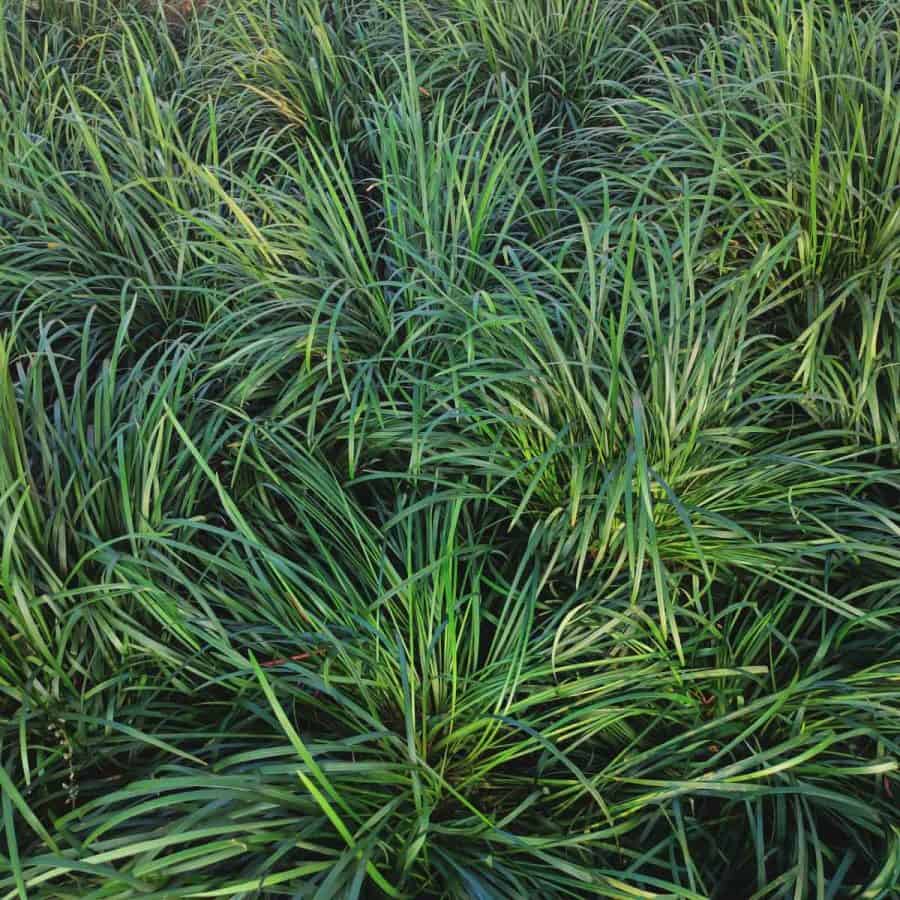
Mondo grass is a grass-like ground cover plant that is evergreen, deer-resistant, and salt-tolerant. Its star-shaped flowers bloom early and come in pink, purple, or white.
Also known as dwarf lilyturf, mondo grass prefers shade, and you won’t have to worry about pests or disease issues.
7. Violet | Viola sororia

Violets are a low-maintenance and high wildlife-value native plant. They work great as a groundcover plant along a driveway or walkway.
Pollinators (and other wildlife) love them, but the entire violet plant is also 100% edible for humans!
8. Virginia Creeper | Parthenocissus quinquefolia
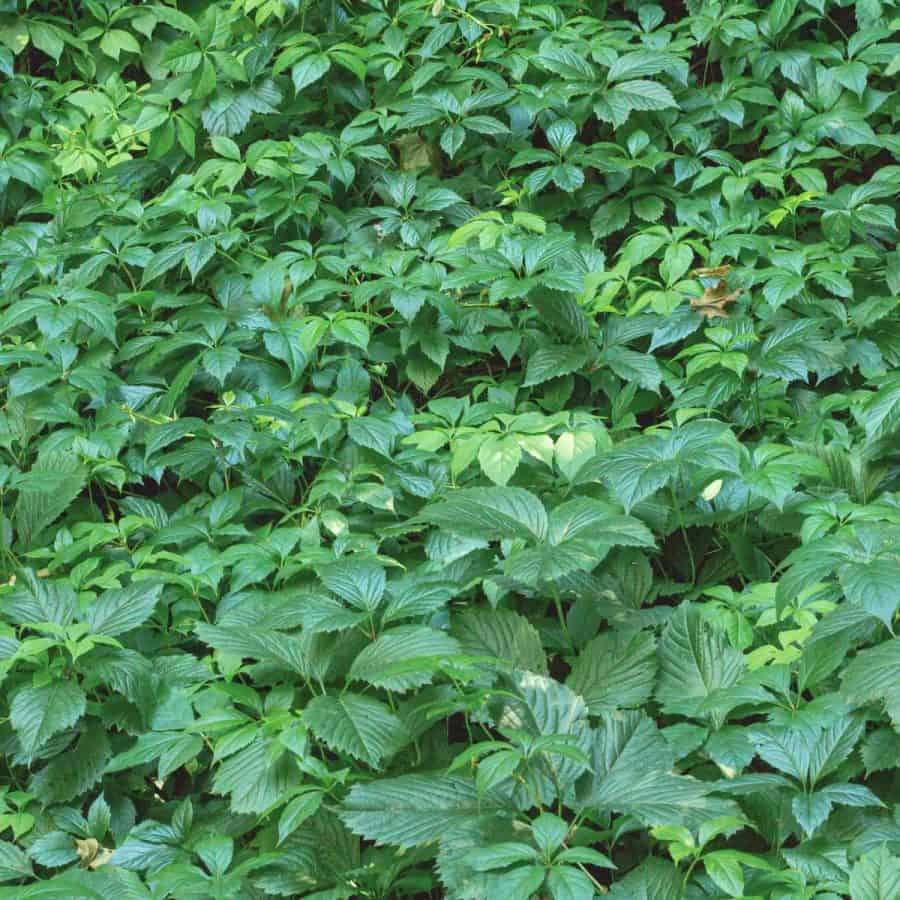
Virginia creeper is a vigorous and adaptable native vine. It clearly can grow vertically, but it can also be grown horizontally as an excellent ground cover plant.
It is a great option for controlling erosion on a slope. It grows well in various soil types and light conditions, including heavy shade.
It makes a beautiful ground cover that turns a lovely, brilliant red in the fall.
This fast-growing plant can grow out of control if not kept in check.
9. Green-and-Gold | Chrysogonum virginianum

Green and gold also goes by its common name, ‘goldenstar’, and has long-blooming yellow flowers.
It’s a low-growing evergreen ground cover that prefers some moisture and partial sun but also does well in partial shade if the soil is humus rich.
This is a more wildlife-friendly alternative to creeping Jenny, ajuga, invasive vinca, or English ivy.
10. Blue Mistflower | Conoclinium coelestinum

Blue mistflower works great as a border plant or colonizing ground cover.
It’s a herbaceous perennial flowering plant and part of the aster family that produces blue or purple flowers.
It prefers moist soil and partial shade. It can do well in moist loam, sand, or clay soils.
11. Pennsylvania Sedge | Carex pensylvanica
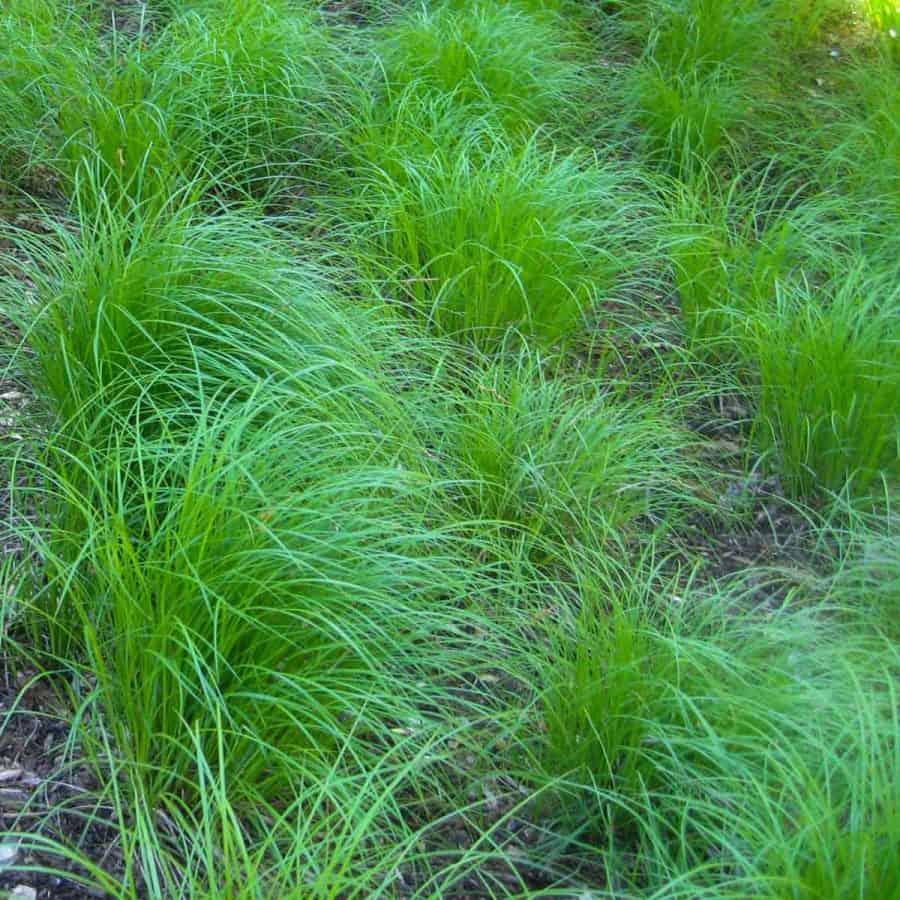
Due to its fine-textured leaves and creeping habit, Pennsylvania sedge is a popular lawn alternative.
It grows actively in spring and fall when soil temperatures are cooler.
It fills in to form a dense, low-growing that doesn’t require mowing. Plant it in a dry shade for the best performance.
12. Snow on the Mountain | Aegopodium podagraria “variegatum”
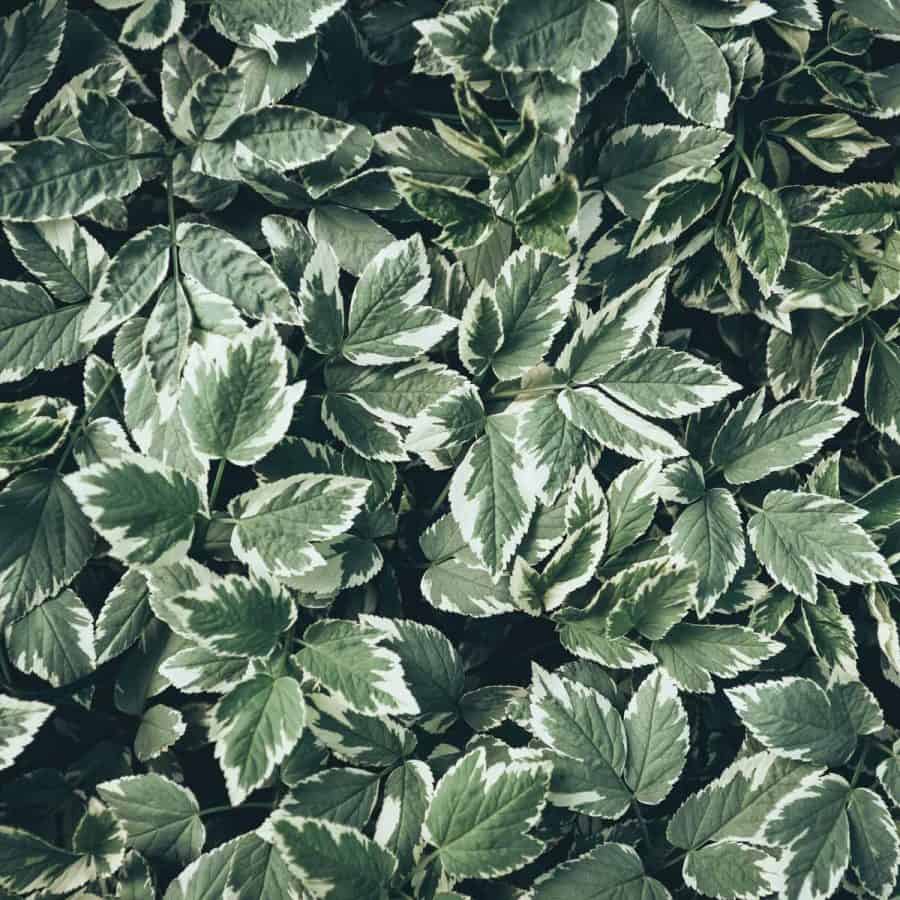
Snow on the Mountain is an annual plant that produces small white flowers with show leaves that can be light green, variegated, or completely white.
It provides a nectar source for bees and butterflies in late summer, but it is considered toxic for humans if ingested.
13. Moss Pink | Phlox subulata
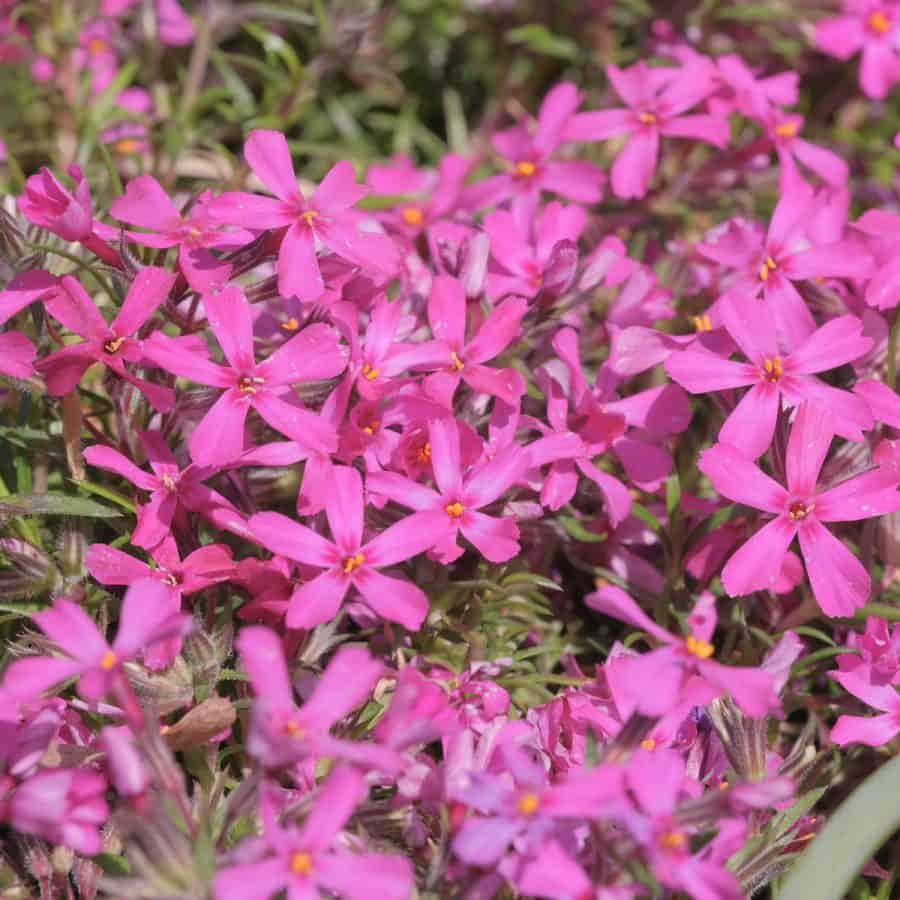
Moss pink, also known as creeping phlox, is an excellent groundcover plant with plenty of color!
Whether you want blue, red, white, or pink flowers, this plant produces dense mats up to six inches high.
Creeping phlox is a great idea for rock landscaping areas such as rock gardens, or over retaining walls, as well as flower beds. It does well in full sun or partial shade as long as it has good drainage.
14. Woodland Phlox | Phlox divaricata
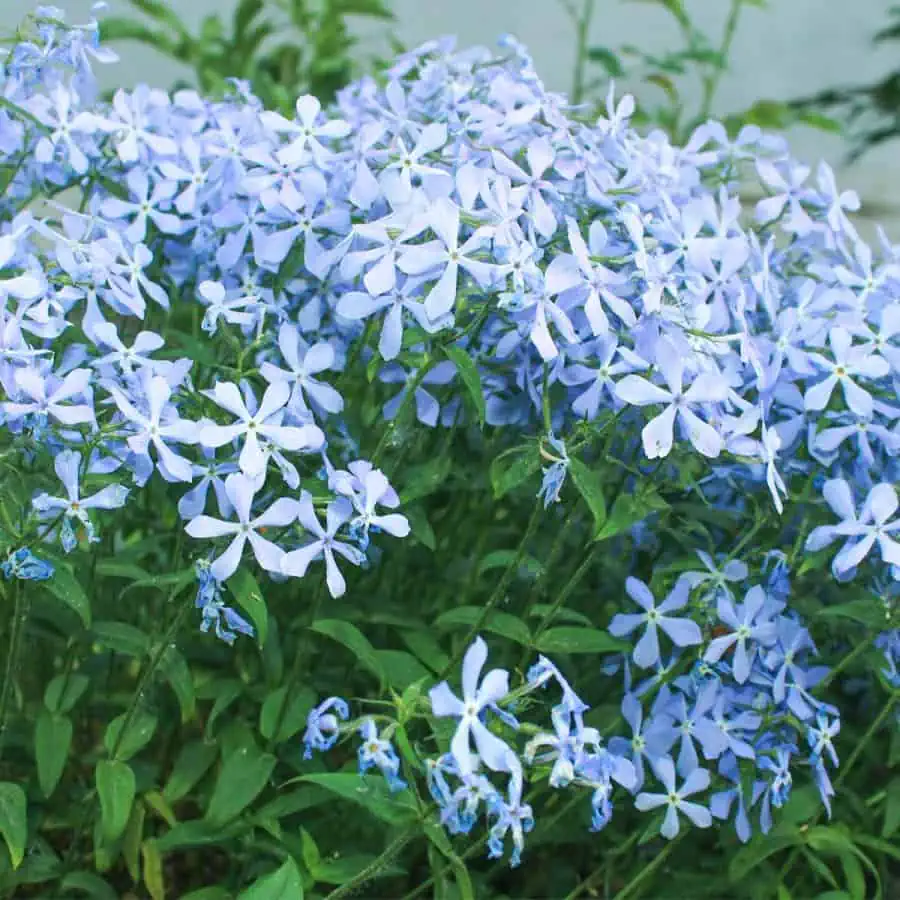
Woodland phlox is a semi-evergreen spring groundcover that produces lovely purple-blue flowers.
It would be a great addition to a woodland garden, a perennial border, or a naturalized area where it can get shade from trees.
It prefers moist soil but tolerates dry soil as well. Early pollinators, including swallowtail butterflies and Nessus sphinx moths, will appear for their nectar.
15. Barrenwort | Epimedium
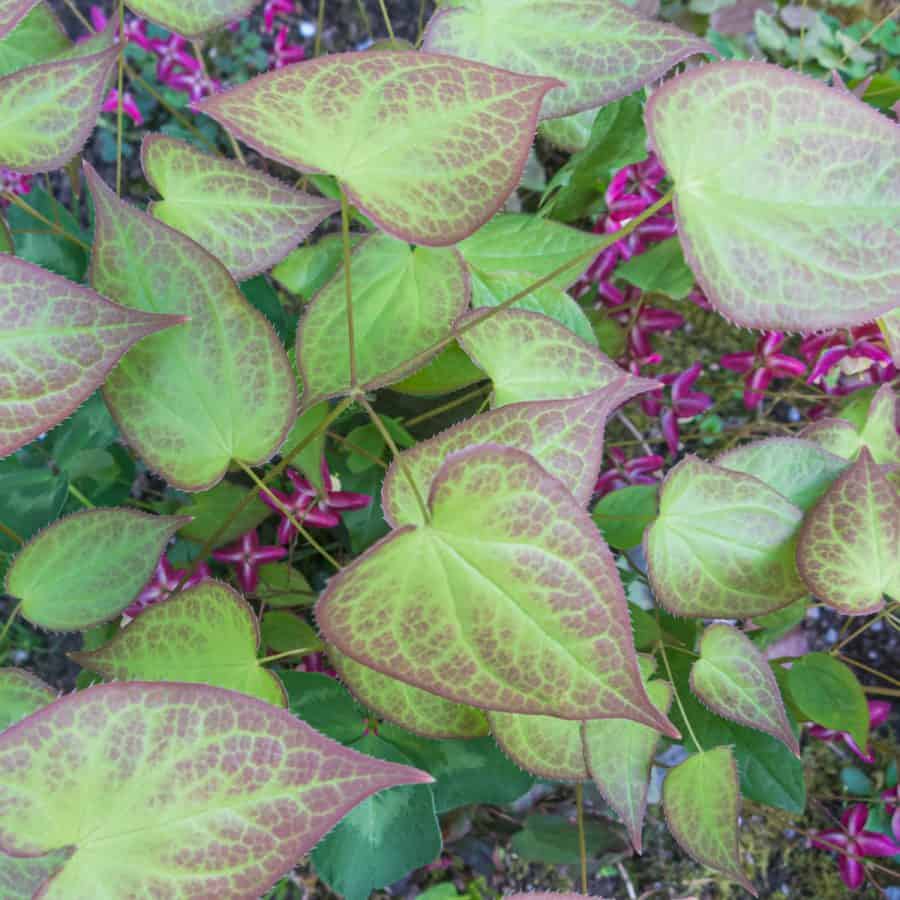
Barrenwort, or Bishop’s Hat, is the common name for the Epimedium genus of plants and is comprised of several dozen species.
Barrenwort is often planted for its nice leaves more so than its blooms. These plants do great as ground cover plants for dry shady areas.
Rose queen (Epimedium grandiflorum) has one of the prettiest flowers amongst this genus if that’s important to you!
16. Bugleweed | Ajuga reptans
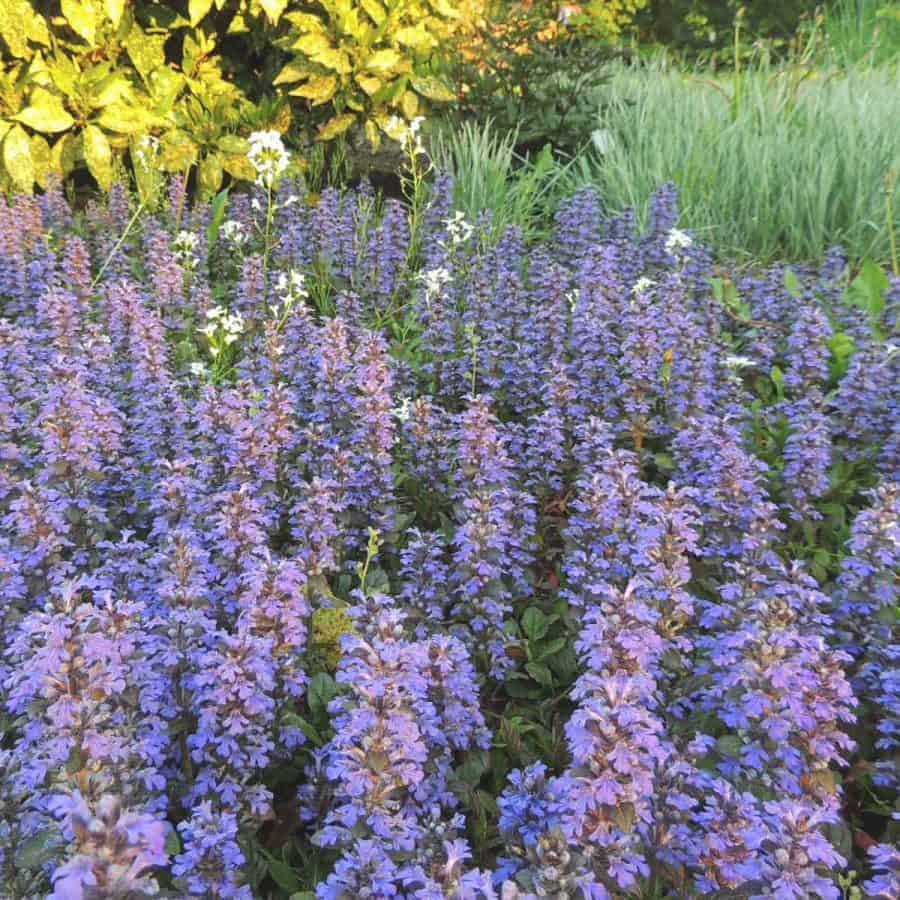
Bugleweed is a fast-growing plant that can quickly fill in spaces where grass won’t grow. Its evergreen foliage and colorful blooms make it very attractive and versatile.
Flowers are purple, white, or blue and bloom in the spring and summer.
It’s resistant to deer and rabbits, does well just about anywhere, including full shade, and is pretty sturdy regarding foot traffic.
17. Christmas Fern | Polystichum acrostichoides

Christmas ferns are an evergreen low-maintenance plant that grows in part shade and forms large clumps that you can divide in the spring. They have dark green 1-2 foot fronds.
When mass planted, they make for excellent ground cover. They’re also known as one of the best ferns for stabilizing soil and preventing erosion.
You can plant Christmas ferns in just about any shady spot you have. They are very beneficial for erosion control.
18. Woodland Stonecrop | Sedum ternatum

Woodland stonecrop is a low-growing plant that is evergreen and carefree.
It spreads easily in moist, partial shade but can tolerate slightly drier soil and partially sunny areas.
Plant it along a path or an area where you can enjoy the clusters of white star-shaped flowers.
19. Golden Ragwort | Packera aurea

Packera aurea (golden groundsel, golden ragwort), Mt Greylock, Adams, MA
Golden ragwort is a quickly-spreading semi-evergreen ground cover that produces bright yellow blooms.
Pollinating bees, butterflies, and beneficial flies love it, and it makes a great alternative to invasive plants such as vinca minor, pachysandra terminalis, and English ivy.
Its natural habitat is the moist dappled shade of woodland areas, but it is adaptable to a variety of growing conditions.
20. Heartleaf Foamflower | Tiarella cordifolia
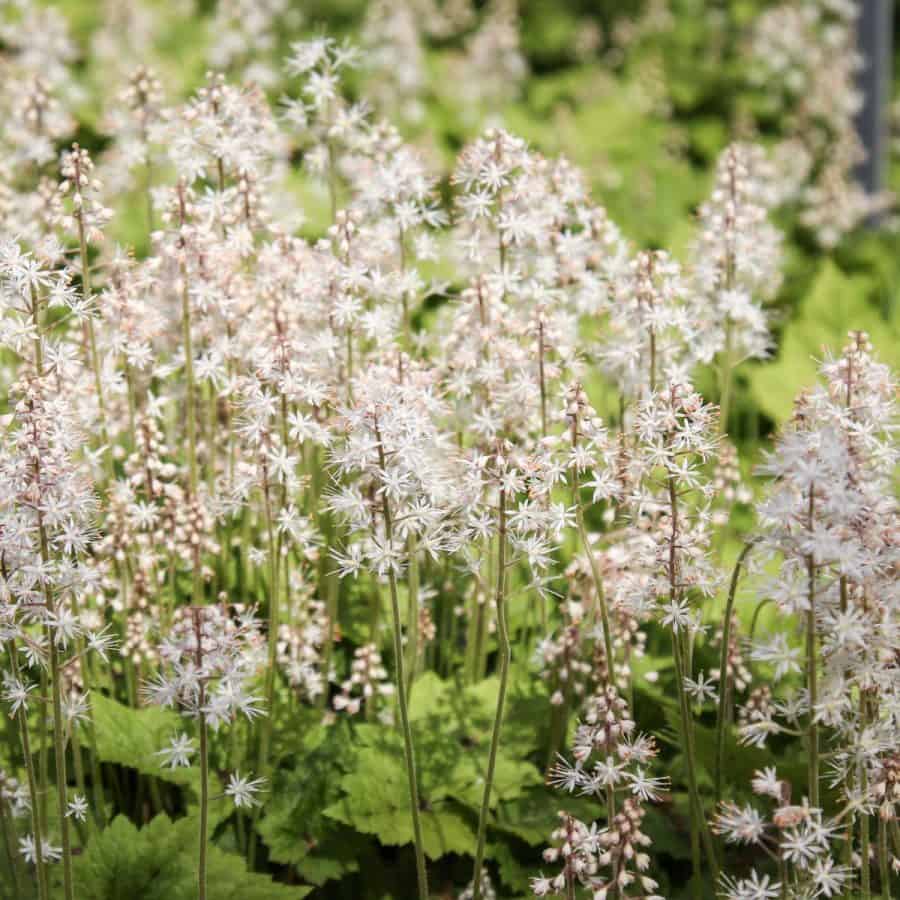
The heartleaf foamflower is an excellent ground cover plant and an alternative to non-native plants such as sweet woodruff.
This attractive wildflower spreads via underground stems, forms colonies, and creates great ground cover for shady spots.
The name comes from the tiny flowers and texture of the stamens, which resemble foam.
It does best in moist, acidic soil.
21. Coral Bells | Heuchera

Coral bells are large evergreen perennial plants native to North America. They bloom in late spring and early summer but also come in late-blooming types.
They come in various colors, from white to deep red to pink.
They make an excellent addition to the edges of woodland or natural gardens in the shade or filtered sun.
22. Lyreleaf Sage | Salvia lyrata
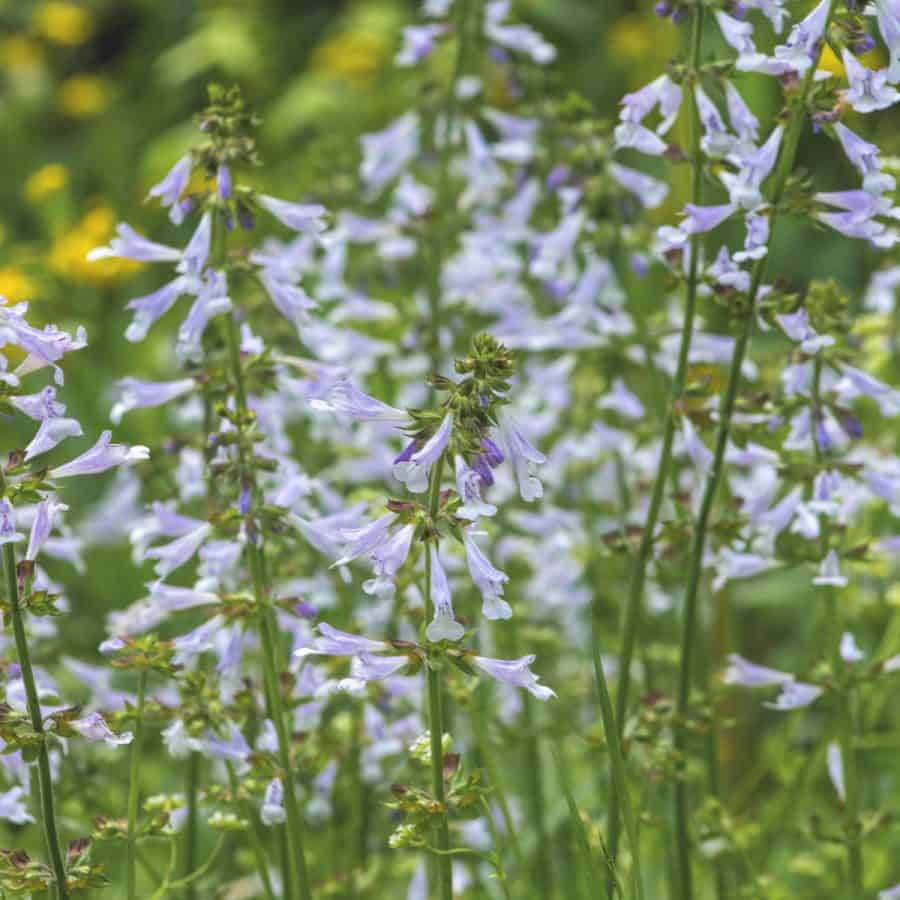
Lyreleaf sage adapts to varying conditions, including drought and periodic flooding.
The lavender blue flowers attract hummingbirds and butterflies in the spring. And if the seeds ripen, they’ll attract American goldfinches and other birds.
23. Moss
Of course we’d be remiss if we didn’t mention moss. Moss is a wonderful ground cover for shady spots. Just be sure to choose a moss type that prefers shade, as there are some that don’t. Typical shade mosses in the US are sheet moss, fern moss, cushion and mood moss.
Not only does moss have an ethereal and enchanting quality with it’s rich textures and colors, but it also serves a big functional role at preventing soil erosion and helps with storm runoff.
Mosses are perfect for running between pathway stones like flagstones. And it grows quickly and can even be transplanted from one location to another, given the same light conditions, as did for this path.
When selecting the best ground cover plants for shade, the possibilities are nearly endless.
Whether you want to plant them on a steep hillside, as a replacement for grass, or just in an area where nothing else will grow, ground covers are a great way to stabilize soil, prevent soil erosion, and reduce weeds.
From versatile and aesthetically pleasing options like wild ginger and creeping phlox, to evergreen varieties that provide texture and year-round color, there is sure to be a ground cover plant perfect for your yard.
Ultimately, the best ground cover for a shaded yard depends on individual taste, budget, and the amount of sun exposure.
And with the right selection of plants and proper care, any homeowner can create a relaxing and beautiful green space that provides a beautiful, low-maintenance yard for you to enjoy for many years.
For other ideas on great landscaping plants, here are wonderful evergreen hedges, and some of the best trees for privacy for smaller yards.
Another related post you may like is The Best Climbing Plants For A Trellis.
Don’t forget to Pin it for later!

Don’t forget to Pin it for later!


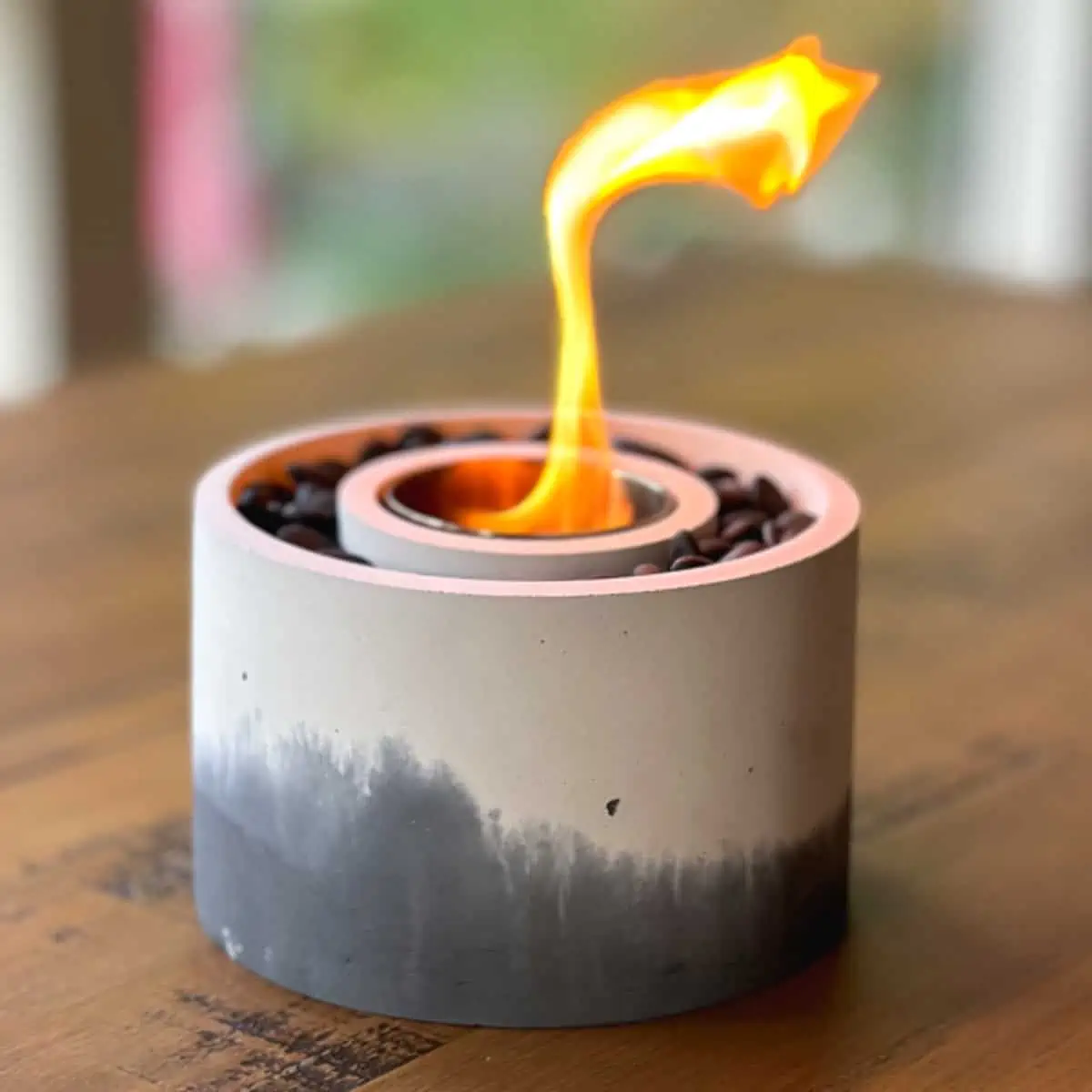


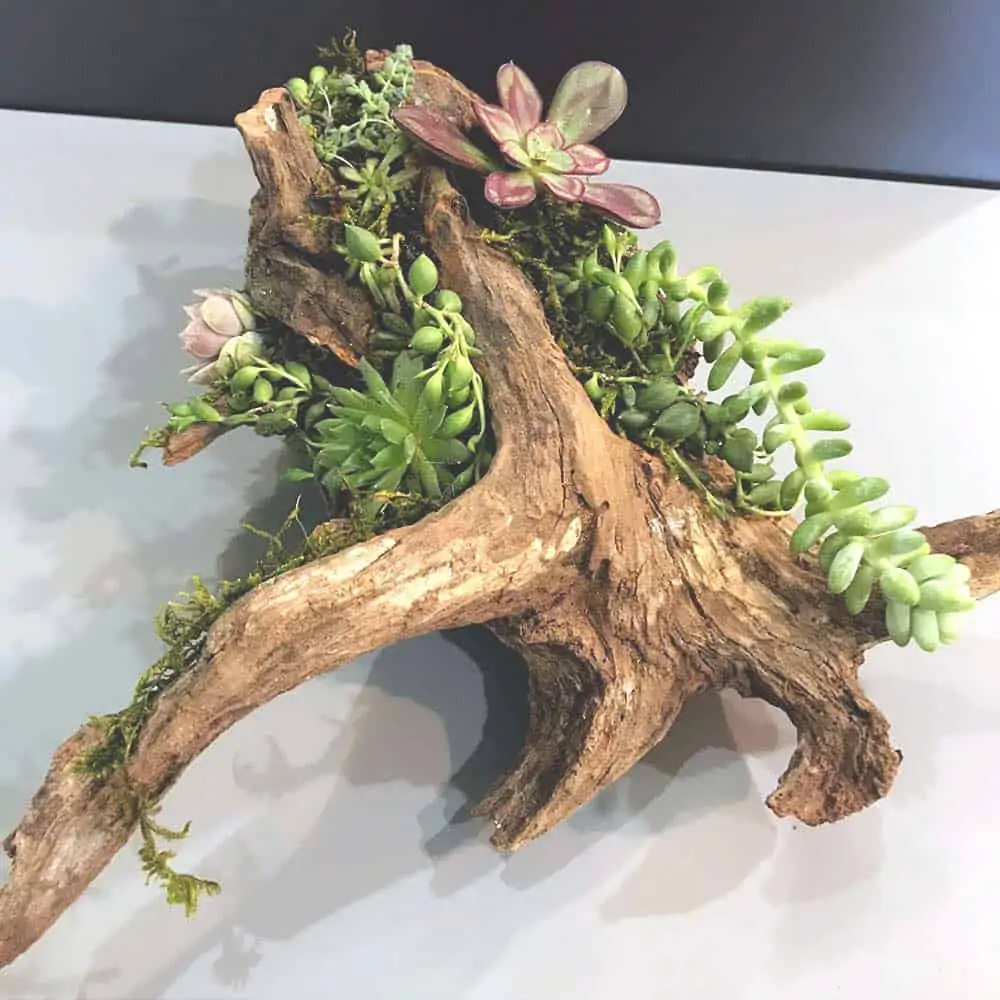
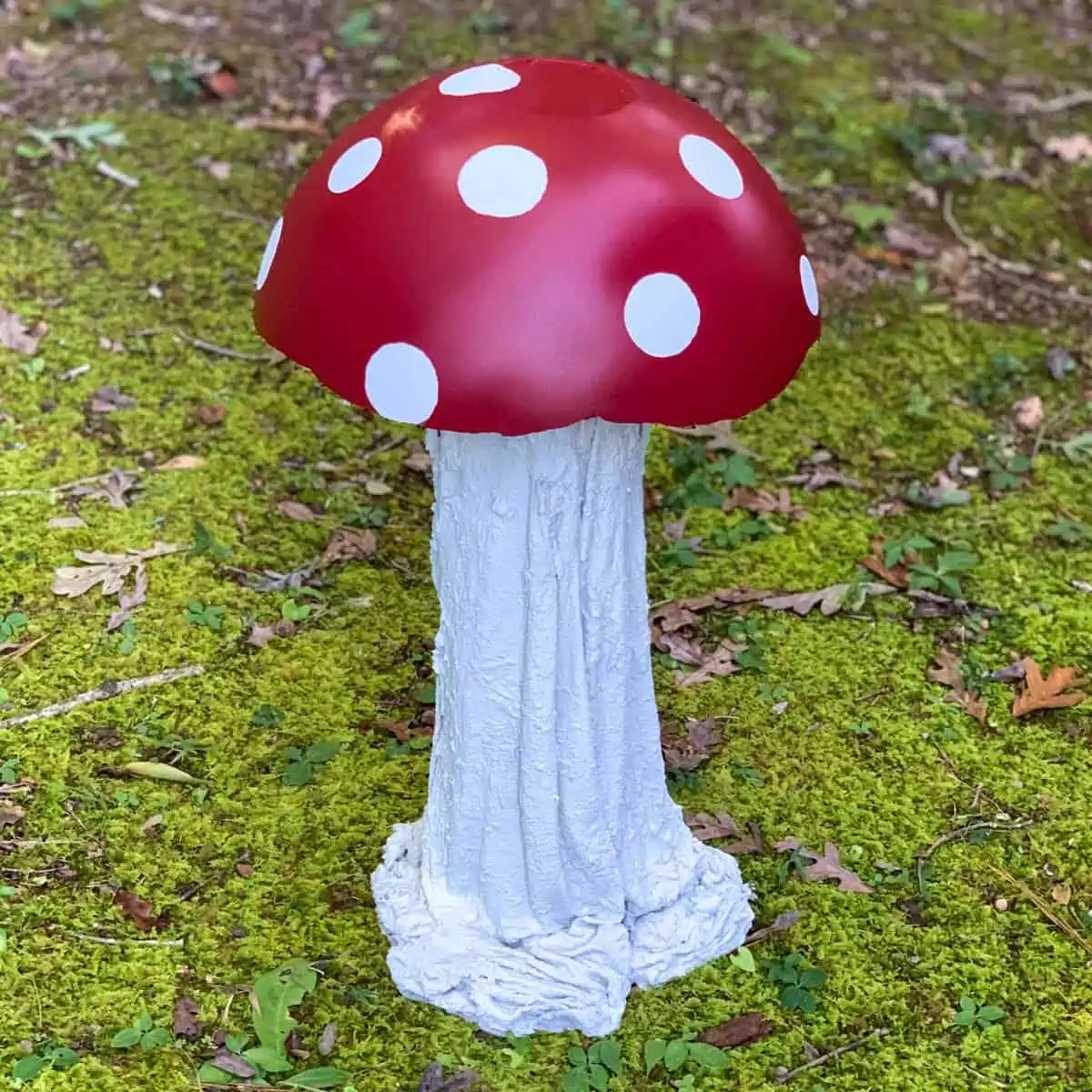
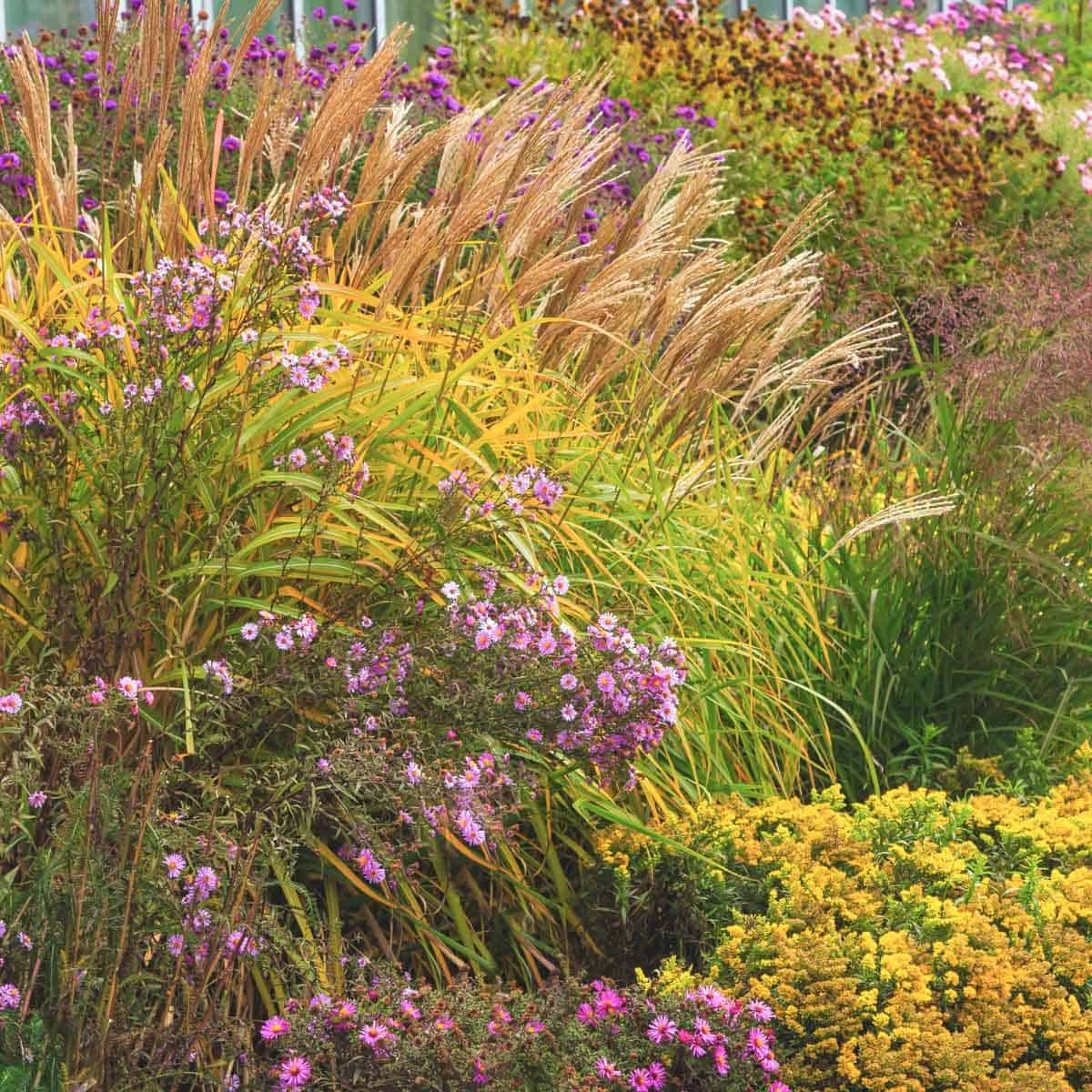
Watch out for the violets. I put them in years ago- they have spread everywhere and I cannot get rid of them. I would strongly advise against them. I don’t know another ground cover that spreads like they do.
Yes, violets are aggressive growers. But it depends on what you’re trying to accomplish. If you have a large amount of space you need to fill in, they can solve a big problem, quickly. But yes, keep an eye on them, and consider keeping a border between them and any areas you don’t want them growing in.